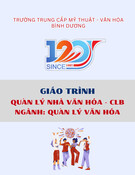Splash Screen
Chapter Introduction
Section 1: The Rise of Islam
Section 2: The Arab Empire and
Its Successors
Section 3: Islamic Civilization
Section 4: The Culture of Islam
Visual Summary
Chapter Menu
Chapter Intro
How can cities survive for thousands of years? Damascus may be the oldest continuously inhabited city in the world and was conquered dozens of times. Caravan routes converged on the city, making it an important trade center. Today the marketplace in the old city sells food and clothing as well as the traditional handicrafts—high quality textiles, leather goods, filigreed gold, silver objects, inlaid wooden, copper, and brass articles—that made the city famous. • What might have been traded in addition to goods? • What makes cities survive?
Chapter Intro
Chapter Intro
The Rise of Islam
What are dominant religions in the world today?
Chapter Intro 1
The Arab Empire and Its Successors
Why do people convert to a different faith?
Chapter Intro 2
Islamic Civilization
What factors may have influenced social status in the Islamic Empire?
Chapter Intro 3
The Culture of Islam
How do the achievements of one culture help foster the growth of another?
Chapter Intro 4
Chapter Preview-End
The BIG Idea
Ideas, Beliefs, and Values In the 600s, the Arabian prophet Muhammad created the religion of Islam, which led to great changes in the social and political systems of Southwest Asia.
Section 1-Main Idea
• sheikh
• Hijrah
• Allah
• hajj
• Quran
• shari’ah
Islam
Content Vocabulary
• Academic Vocabulary
•
revelations
• submission
Section 1-Key Terms
• Arabian Peninsula
• Makkah
• Muhammad
• Khadija
• Muslims
• Madinah
• Bedouin
• Five Pillars of Islam
Section 1-Key Terms
People and Places
Would you feel comfortable traveling to a country in political disorder?
A. Yes
B. No
A. A B. B
0%
0%
Section 1-Polling Question
The Arabs
After the domestication of the camel, the trade routes of the Arabs expanded. Communities prospered, but tension among the rich and poor increased.
Section 1
The Arabs (cont.)
• Arabs were nomadic people who lived on the Arabian Peninsula. They were farmers and herded animals.
• For survival, Arabic tribes organized to help
one another. Each tribe was ruled by sheikh.
• After the camel was domesticated, Arabs
Section 1
were able to expand the caravan trade into more of the desert.
The Arabs (cont.)
• Most Arabs were polytheistic but believed in
a supreme god called Allah.
• Makkah (Mecca) was an important city to
Section 1
the Arabs for religious and social purposes.
Why did the trade routes on the Arabian Peninsula become more popular?
A. There was political disorder in Mesopotamia and Egypt.
B. The Arabs built rest stops for people and animals.
C. A complex road system
0%
0%
0%
0%
was developed.
A. A B. B C. C D. D
D. Maps became available to traders.
Section 1
The Life of Muhammad
The revelations of Muhammad led to the creation of the Islamic religion.
Section 1
The Life of Muhammad (cont.)
• Muhammad was married to a rich widow
named Khadija. He would soon become a prophet and start the religion of Islam.
• Muhammad was disturbed by greediness he witnessed in Makkah. While meditating in the hills, he received revelations from the angel Gabriel.
• These messages were eventually written
down in the holy book of Islam, the Quran.
Southwest Asia in Muhammad’s Time, c. 600
Section 1
The Life of Muhammad (cont.)
• The word Islam means “peace through
submission to the will of Allah.” Those who practice the religion of Islam are called Muslims.
• In 622 Muhammad and his followers traveled from Makkah to Madinah. This journey is known as the Hijrah.
• The people of Madinah and the bedouin
Section 1
became the first communities to convert to Islam.
The Life of Muhammad (cont.)
• Muhammad and his army returned to
Section 1
Makkah and converted the people to Islam. One of the Five Pillars of Islam is the hajj, or pilgrimage to Makkah.
At what age was Muhammad orphaned?
A. Four
B. Five
C. Six
D. Seven
0%
0%
Section 1
A. A B. B C. C 0% 0% D. D
The Teachings of Muhammad
Islam, like Christianity and Judaism, is a monotheistic religion. Islam is also both a set of religious beliefs and a whole way of life.
Section 1
The Teachings of Muhammad (cont.)
• Islam is a monotheistic religion and offers the hope of an afterlife to all who follow the Five Pillars of Islam.
• Five Pillars of Islam:
– Belief–There is no deity but the One God
and Muhammad is his messenger.
Section 1
– Prayer–Muslims pray five times a day.
The Teachings of Muhammad (cont.)
– Charity–They give part of their wealth to
the poor.
– Fasting–During Ramadan, Muslims fast from food and drink from dawn to sunset.
– Pilgrimage–Believers make a pilgrimage to
Makkah at least once in their lifetime.
Section 1
• After Muhammad’s death, Muslim scholars also developed the shari’ah to regulate the daily life of Muslims.
How is Islam similar to Christianity and Judaism?
A. All three are monotheistic and believe in an afterlife.
B. All three use symbols
to represent their religion.
C. All three believe that
conversion is the main purpose of the religion.
0%
0%
0%
D. All three believe that clergy
are closer to God than the laity.
Section 1
A. A B. B C. C 0% D. D
Section 1-End
The BIG Idea
Order and Security After the death of Muhammad, his successors organized the Arabs and set in motion a great expansion.
Section 2-Main Idea
• caliph
• vizier
•
jihad
• sultan
• Shia
• mosque
• Sunni
Content Vocabulary
• oriented
• complex
Section 2-Key Terms
Academic Vocabulary
• Abū Bakr
• Saladin
• Mu‘āwiyah
• Mongols
• Umayyad dynasty
• Battle of Tours
• Abbasid dynasty
• Baghdad
• Hārūn al-Rashīd
• Seljuk Turks
Section 2-Key Terms
People, Places, and Events
When people are dissatisfied with a political leader the community is weakened.
A. Agree
B. Disagree
A. A B. B
0%
0%
Section 2-Polling Question
Creation of an Arab Empire
Islam grew under the rule of Muhammad’s successors, but there was constant tension over choosing who should rule the empire.
Section 2
Creation of an Arab Empire (cont.)
• Muhammad was the accepted political and
religious leader of the Islamic world. Following his death, the lack of a named successor or a male heir created problems of succession.
• Muhammad had daughters, but in a male-
Section 2
oriented society they would not be accepted as leaders.
Creation of an Arab Empire (cont.)
• Muhammad’s father-in-law, Abū Bakr, was
named Muhammad’s successor. He traveled with Muhammad and was his chief advisor.
• In 632 Abū Bakr was named caliph.
Section 2
• Under Abū Bakr’s leadership, the Islamic Empire expanded. The Quran permitted jihad, which was the justification for expansion.
Creation of an Arab Empire (cont.)
• The Arab army was led by brilliant generals
and courageous soldiers who were bolstered by the belief that Muslim warriors were guaranteed a place in paradise if they died in battle.
• The Arab conquerors were tolerant of the
peoples in the empire. Conversion to Islam was not required of the people.
Spread of Islam, 632–750
Section 2
How was Muhammad’s successor chosen?
A. His children became the
rulers of Islam.
B. Abū Bakr defeated rebel forces in a civil war.
0%
0%
0%
0%
C. Abū Bakr was chosen caliph because of his closeness with Muhammad.
D. Abū Bakr was elected because of his
A. A B. B C. C D. D
wealth and fame.
Section 2
The Umayyads
Under the rule of the Umayyad dynasty, the Islamic Empire made many conquests, but there were internal struggles that led to a division of the community.
Section 2
The Umayyads (cont.)
• The two caliphs following Abū Bakr were assassinated. In 656 Muhammad’s son-in- law, Ali, became caliph. He too would be assassinated after five years of rule.
• In 661 the governor of Syria, General
Section 2
Mu'āwiyah became caliph. He was known for using force only when necessary.
The Umayyads (cont.)
• Mu′āwiyah made the office of caliph
hereditary for his family. He established the Umayyad dynasty and moved the capital from Madinah to Damascus in Syria.
Section 2
• The Arab Empire under Umayyad leadership extended its boundaries into Asia Minor and Spain. In 732 the Arab forces were defeated at the Battle of Tours, ending the expansion into Europe.
The Umayyads (cont.)
• The Umayyad dynasty had gained wealth
from its large empire and was influenced by the different cultures of the Persians and Byzantines.
• A revolt in 680 led to a split in Islam that
Section 2
exists today. Hussein, the son of Ali, led a rebellion against Umayyad rule and was defeated.
The Umayyads (cont.)
• Islam was split into two groups. The Shia
Muslims accept only the descendants of Ali as the true rulers of Islam. Sunni Muslims accepted the Umayyads as the rulers of Islam.
Arab Campaigns into France
Section 2
What caused the split in Islam?
A. Muhammad’s daughters
wanted to rule the empire.
B. Disagreement over the caliphate between descendants of Ali and the Umayyad rulers.
0%
0%
0%
0%
C. Disagreement over the
Five Pillars.
D. Disagreement between Arabs and non-Arabs over
political control of the empire.
Section 2
A. A B. B C. C D. D
The Abbasid Dynasty
Under the Abbasid dynasty, Islam experienced prosperity and a new cultural outlook.
Section 2
The Abbasid Dynasty (cont.)
• Non-Arabs resented the increasingly corrupt government of the Umayyad rule. In 750, Abū al-′Abbās overthrew the Umayyad dynasty and set up the Abbasid dynasty.
• The Abbasids moved the capital to Baghdad
on the Tigris River.
• Persian influence encouraged a new cultural
Section 2
outlook, and judges, merchants, and government officials replaced warriors as the ideal citizens.
The Abbasid Dynasty (cont.)
• The golden age of the Abbasid caliphate
occurred with the rule of Hārūn al-Rashīd. The bureaucracy of the government became more complex, and a vizier advised the caliph.
Section 2
• Financial and political corruption weakened the empire, and the provinces of the empire began to break away.
What was the result of the Abbasids’ decision to relocate the capital to Baghdad?
A. Non-Arabs revolted.
B. Abbasid and Umayyad
dynasties had a civil war.
0%
0%
0%
0%
C. The empire was weakened.
D. There was an increase in A. A B. B C. C D. D
Section 2
Persian influence and wealth from trade.
Seljuk Turks and the Crusades
Political turmoil disrupted Southwest Asia after the Seljuk Turks became a powerful military force.
Section 2
Seljuk Turks and the Crusades (cont.)
• In Egypt, the Fatimid dynasty grew strong
from trade and created a strong army of non- native soldiers. One of these groups was the Seljuk Turks.
• The Seljuk Turks were a nomadic people
from Asia who had distinguished themselves in battle. In 1055, a Turkish commander captured Baghdad and proclaimed himself sultan.
Abbasid Empire, 800
Section 2
Seljuk Turks and the Crusades (cont.)
• In 1071, the Byzantine Empire attacked the Turks at Manzikert in modern-day Turkey. The Byzantines were easily defeated and looked to Europe for help.
• In 1096, the first crusades began to retake
Muslim areas.
• After initial success against the Muslims,
Section 2
Christian forces were expelled by Saladin in 1169.
What event led to the Crusades?
A. The Byzantines were routed at Manzikert by Arab forces.
B. The rise of the Fatimid
dynasty in Egypt.
0%
0%
0%
0%
C. The death of Alexius I.
Section 2
D. The invasion of Europe by the Muslims. A. A B. B C. C D. D
The Mongols
The violent invasion of the Mongols destroyed the old Islamic Empire established by the Arabs and created a new center of Islamic civilization in Cairo, Egypt.
Section 2
The Mongols (cont.)
• The Mongols were a pastoral, horse-riding people who lived in the Gobi region of Asia.
• These nomadic warriors were destructive and attempted to create terror to prevent people from fighting back.
Section 2
• Led by leaders such as Ghengis Khan and Kublai Khan, the Mongols an empire that stretched from the Sea of Japan to the Caspian Sea.
The Mongols (cont.)
• The Mongols captured Persia and
Mesopotamia, ending the Abbasid dynasty. The Mongols destroyed schools, libraries, mosques, and palaces.
• Over time, the Mongols settled in the
Section 2
conquered areas and converted to Islam. The new center of Islamic civilization became Cairo, in Egypt.
Where did the Mongols come from?
A. Western Greece
B. Southern Egypt
C. Northern China
D. Eastern India
0%
0%
Section 2
A. A B. B C. C 0% 0% D. D
Section 2-End
The BIG Idea
Struggle for Rights Though Islamic teaching says that all people are equal under Allah, this was not strictly the case in the Arab Empire.
Section 3-Main Idea
• bazaar
• dowry
Content Vocabulary
• compiled
• eroded
Section 3-Key Terms
Academic Vocabulary
• Morocco
• Caspian Sea
• Fatimids
• Córdoba
Section 3-Key Terms
People and Places
Does your community meet your needs for your lifestyle?
A. Yes
B. No
A. A B. B
0%
0%
Section 3-Polling Question
Prosperity in the Islamic World
Growing trade and favorable geography allowed both urban and rural areas to flourish during the period of the Arab Empire.
Section 3
Prosperity in the Islamic World (cont.)
• The Arab Empire was prosperous due to its trading system. Extensive trade was carried out within the empire and extended from Morocco to the Caspian Sea.
• Cities such as Baghdad, Cairo, and
Section 3
Damascus were commercial and cultural centers in the Arab Empire.
Prosperity in the Islamic World (cont.)
• The Fatimids made Cairo one the greatest
cities in the empire and in the world.
• Islamic cities, such the capital of Umayyad Spain, Córdoba, had a distinct physical appearance. Mosques and political buildings were built to be impressive.
Trade in Southwest Asia, 737–1212
Section 3
Prosperity in the Islamic World (cont.)
• Public buildings and bazaars were an
important part of Muslim cities.
Section 3
• Even though the Arab Empire was more urbanized than other areas, most of the people still made their living by farming.
Which of the following was not one of the great cultural cities of the Arab Empire?
A. Venice
B. Cairo
C. Damascus
0%
0%
D. Baghdad
Section 3
A. A B. B C. C 0% 0% D. D
Islamic Society
According to Islamic teaching, all groups are equal under the eyes of Allah. However, this was not strictly the case in the Arab Empire.
Section 3
Islamic Society (cont.)
• Allah’s teachings were compiled in the Quran to teach Muslims how to live their lives.
• One facet of Islam is that all people are
created equal.
• Slaves were not treated equally. Since
Section 3
Muslims could not be slaves, most of their slaves came from Africa or Asia.
Islamic Society (cont.)
• Women were granted spiritual and political equality with men, but some of the rights they possessed were eroded by older customs.
• Women had male guardians and were
required to cover virtually all parts of their bodies in public.
• Men could marry more than one wife, but
Section 3
few could afford the dowry to more than one bride.
Which of the following does not describe an article of clothing worn by Muslim women?
A. Burka
B. Chador
C. Hijab
0%
0%
D. Dowry
Section 3
A. A B. B C. C 0% 0% D. D
Section 3-End
The BIG Idea
New Technologies Islamic achievements in philosophy, science, history, and the arts had an important influence on European civilization.
Section 4-Main Idea
• astrolabe
• muezzin
• minaret
• arabesques
Content Vocabulary
•
• commentary
transform
Section 4-Key Terms
Academic Vocabulary
•
Ibn-Rushd
•
Ibn Sīnā (Avicenna)
•
Ibn-Khaldūn
• Omar Khayyám
• Sāmarrā’
• Granada
Section 4-Key Terms
People and Places
Do the achievements of other societies impact you today?
A. Yes
B. No
A. A B. B
0%
0%
Section 4-Polling Question
Philosophy, Science, and History
Islamic advancements in philosophy, science, and history contributed to the world’s knowledge.
Section 4
Philosophy, Science, and History (cont.)
• The preservation of scholarly works was
aided by paper, which was introduced from China in the eighth century.
• Muslim scholars translated the works of
Section 4
Aristotle and the Greek philosophers into Arabic.
Philosophy, Science, and History (cont.)
• The Muslim philosopher Ibn-Rushd wrote a commentary of virtually all of Aristotle’s literary works.
• In mathematics, Muslims adopted and
Section 4
passed on the numerical system of India, including the use of zero. The mathematical discipline of algebra was also developed by Muslims.
Philosophy, Science, and History (cont.)
• Muslims perfected the astrolabe, an instrument used for navigation. The astrolabe allowed Europeans to sail to the Americas.
• Ibn Sīnā wrote a medical encyclopedia that
became the basic medical textbook for European students during medieval times.
Section 4
• Ibn-Khaldūn was a prominent historian who wrote about the cyclical life of civilizations in Muqaddimah (Introduction to History).
How did Europeans learn about the works of the Greek philosophers?
A. Roman manuscripts
B. Translated works of Muslim scholars
C. Muslim traders
0%
0%
0%
0%
D. Muslim history books
A. A B. B C. C D. D
Section 4
Literature
The Rubaiyat and The 1001 Nights are two major early Islamic works of literature that are still enjoyed today.
Section 4
Literature (cont.)
• Islamic literature influenced the culture of
Southwest Asia.
• The Rubaiyat, written by Omar Khayyám, is
one of the most familiar books of Middle Eastern literature.
• The anonymous stories of The Arabian
Section 4
Nights also called The 1001 Nights are a collection of folktales, fables, and romances that blend the natural with the supernatural.
Which of the following literary works contains a collection of folktales and fables?
A. Rubaiyat
B. The 1001 Nights
C. The Astrolabes
0%
0%
0%
0%
D. Rushd’s Adventures
A. A B. B C. C D. D
Section 4
Art and Architecture
Muslim art and architecture reflect the spiritual glory of Islam.
Section 4
Art and Architecture (cont.)
• The Great Mosque of Sāmarrā′ was the
world’s largest mosque when it was built.
• It is famous for its minaret, which enabled the muezzin to ascend an outside spiral staircase to call the faithful to prayer daily.
Section 4
• Located in southern Spain, the mosque at Córdoba contains hundreds of columns which transform the structure into a unique “forest of trees.”
Art and Architecture (cont.)
• Islamic palaces also showcase the glory of Islamic power. In the castle of Alhambra in Granada, Spain, every inch of the fortress is covered in floral and abstract patterns.
Section 4
• Islamic art and architecture are dominated by repeating geometric patterns called arabesques that completely cover the surface of objects.
What is unique about the Great Mosque at Sāmarrā′?
A. It was built by non-Muslims.
B. It is constructed of
limestone.
C. It is not covered by
arabesques.
0%
0%
0%
0%
D. The staircase to the
minaret is on the outside.
A. A B. B C. C D. D
Section 4
Section 4-End
MUHAMMAD’S VISION and a Powerful New Faith
•
In A.D. 622, Muhammad began preaching a new religion—Islam.
• Arab leaders persecuted Muslims,
but Muhammad led an army against them; for Muslims, he was a political, along with a religious, leader.
• The revelations of Allah (God)
to Muhammad are written down in the Quran, or holy book of Islam.
VS 1
ARAB MUSLIMS Build an Empire
•
In time, issues about who should be the caliph, or successor to Muhammad, resulted in a split between Sunni and Shia Muslims.
•
Islamic zeal and territorial ambition led to vast conquests and an empire ruled first from Makkah, then Baghdad.
• The Seljuk Turks established a new Islamic dynasty in 1055; in 1071 they defeated Byzantine rulers who asked the European states for help.
VS 2
ISLAM Focuses On All Aspects of Muslim Life
• Commerce and scholarship throve in the Islamic cities of Baghdad, Cairo, and Damascus.
• Social classes existed, but Islam granted merchants and women more status than most other cultures of the era.
• Muslim scholars preserved Greek learning while making
significant advances in mathematics and medicine.
• Mosques and palaces testified to Islamic architectural
innovation.
VS 3
VS-End
Figure 1
Figure 2
Figure 3
Figure 4
Figure 5
Chapter Transparencies Menu
Chapter Transparency
Unit Time Line Transparency
Select a transparency to view.
Chapter Trans Menu
Cause-and-Effect Transparency
Chapter Trans
Unit Timeline Trans
CnETrans
DFS Trans 1
DFS Trans 2
DFS Trans 3
DFS Trans 4
sheikh
Vocab1
the ruler of an Arabic tribe, chosen from one of the leading families by a council of elders
Allah
Vocab2
Arabic for “God”; the supreme god of Islam
Quran
Vocab3
the holy scriptures of the religion of Islam
Islam
Vocab4
monotheistic religion that emerged in the Arabian Peninsula during the seventh century A.D.
Hijrah
Vocab5
the journey of Muhammad and his followers to Madinah in 622, which became year 1 of the official calendar of Islam
hajj
Vocab6
a pilgrimage to Makkah, one of the requirements of the Five Pillars of Islam
shari’ah
Vocab7
a law code drawn up by Muslim scholars after Muhammad’s death; it provided believers with a set of practical laws to regulate their daily lives
revelations
Vocab8
divine truths
submission
Vocab9
act of submitting to the control or authority of another
caliph
Vocab10
a successor of Muhammad as spiritual and temporal leader of the Muslims
jihad
Vocab11
“struggle in the way of God”
Shia
Vocab12
a Muslim group that accepts only the descendants of Muhammed’s son-in- law Ali as the true rulers of Islam
Sunni
Vocab13
a Muslim group that accepts only the descendants of the Umayyads as the true rulers of Islam
vizier
Vocab14
a high government official in ancient Egypt or in Muslim countries
sultan
Vocab15
“holder of power,” the military and political head of state under the Seljuk Turks and the Ottomans
mosque
Vocab16
a Muslim house of worship
oriented
Vocab17
directed toward the interests of a particular group
complex
Vocab18
having many intricate parts
bazaar
Vocab19
a covered market in Islamic cities
dowry
Vocab20
a gift of money or property paid at the time of marriage, either by the bride’s parents to her husband or, in Islamic societies, by a husband to his wife
compiled
Vocab21
collected and edited into a volume
eroded
Vocab22
diminished or destroyed by degrees
astrolabe
Vocab23
an instrument used by sailors to determine their location by observing the positions of stars
minaret
Vocab24
the tower of a mosque from which the muezzin calls the faithful to prayer five times a day
muezzin
Vocab25
the crier who calls the Muslim faithful to prayer from the minaret of a mosque
arabesque
Vocab26
geometric patterns repeated over and over to completely cover a surface with decoration
commentary
Vocab27
an explanatory treatise
transform
Vocab28
to change the form or appearance of
To use this Presentation Plus! product:
Click the Forward button to go to the next slide.
Click the Previous button to return to the previous slide.
Click the Home button to return to the Chapter Menu.
Click the Transparency button from the Chapter Menu, Chapter Introduction slides, or Visual Summary slides to access the transparencies that are relevant to this chapter. From within a section, click on this button to access the relevant Daily Focus Skills Transparency.
Click the Return button in a feature to return to the main presentation.
Click the History Online button to access online textbook features.
Click the Reference Atlas button to access the Interactive Reference Atlas.
Click the Exit button or press the Escape key [Esc] to end the slide show.
Click the Help button to access this screen.
Links to Presentation Plus! features such as Maps in Motion, Graphs in Motion, Charts in Motion, Concepts in Motion, and figures from your textbook are located at the bottom of relevant screens.
Help
This slide is intentionally blank.
End of Custom Shows



![Bài giảng Lịch sử thế giới trung đại [mới nhất]](https://cdn.tailieu.vn/images/document/thumbnail/2025/20250506/vinarutobi/135x160/4361746531976.jpg)
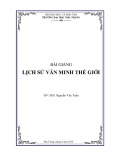
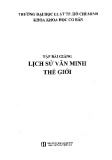

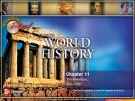
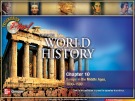
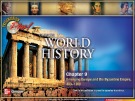
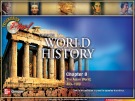
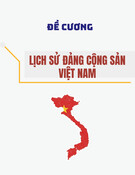
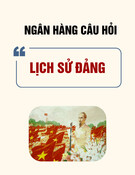

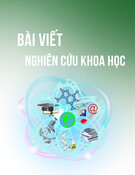


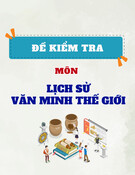
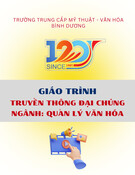
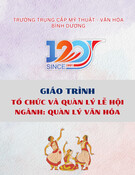
![Giáo trình Tổ chức và Quản lý Hoạt động Văn hóa Thông tin Cơ sở (Ngành Quản lý Văn hóa - Trung cấp) - Trường Trung cấp Mỹ thuật - Văn hóa Bình Dương [Mới nhất]](https://cdn.tailieu.vn/images/document/thumbnail/2025/20251110/kimphuong1001/135x160/17861762748492.jpg)
